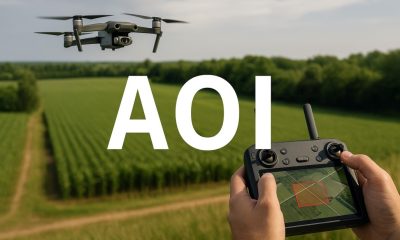Australian Drone Regulations
Australian Drone Operating rules
Published
10 months agoon
Table Of Contents

Australian Drone Operating rules
Adhering to Australian Drone Operating Rules is essential for maintaining safety, privacy, and compliance in drone operations across the country. Established by the Civil Aviation Safety Authority (CASA), these rules set the standards for altitude limits, distance requirements, restricted airspace, visual line of sight (VLOS), and night operations. Understanding and following these regulations is crucial for all drone operators, whether for recreational or commercial purposes, to ensure that drone flights are conducted legally and responsibly.
Maximum Altitude
Height Restriction
- General Rule: Drones must not be flown higher than 120 meters (400 feet) above ground level. This altitude limit is set to prevent conflicts with manned aircraft and to ensure that drones operate safely below commercial flight paths.
- Exceptions: Specific operations that require flying at higher altitudes may be permitted with special authorization from CASA. This is typically reserved for activities like surveying or infrastructure inspections, where higher altitudes are necessary for the task.
Distance from People and Property
Safe Distance Requirements
- Standard Distance: Operators must keep their drones at least 30 meters away from people who are not involved in the operation. This distance is a safety measure designed to protect bystanders in the event of a malfunction or crash.
- Crowded Areas: Flying drones over large gatherings of people, such as concerts, sporting events, or public demonstrations, is prohibited unless the operator has received specific authorization from CASA. This rule minimizes the risk of injury in densely populated areas.
Special Considerations
- Private Property: Operators should avoid flying over private property without the owner’s permission to respect privacy and avoid potential legal issues.
Restricted Airspace
No-Fly Zones
- Airports and Aerodromes: Drones must not be flown within 5.5 kilometers of a controlled aerodrome (an airport with a control tower) without prior approval from air traffic control. This rule is critical for preventing interference with manned aircraft.
- Military Bases and Critical Infrastructure: Flying drones near military installations, prisons, power plants, and other critical infrastructure is strictly prohibited. These areas are designated as no-fly zones to ensure national security and public safety.
- Emergency Situations: Drones are not allowed to fly near emergency response operations, such as bushfire zones or disaster areas, unless specifically authorized. Unauthorized drone flights in these areas can interfere with rescue efforts and pose additional risks.
Geofencing Technology
- Automatic Restrictions: Many modern drones are equipped with geofencing technology that automatically prevents them from entering restricted airspace. This feature helps operators comply with no-fly zone regulations and enhances overall safety.
Visual Line of Sight (VLOS)
Requirement
- Visual Line of Sight (VLOS): Operators must keep their drones within visual line of sight at all times. This means the drone must be visible to the operator without the aid of visual enhancement devices, such as binoculars or telescopes.
- Spotters: In cases where extended range or complex operations are necessary, operators can use a visual observer or spotter to assist in maintaining VLOS. The spotter helps ensure that the drone remains within a safe and visible range, reducing the risk of losing control.
Night Operations
Lighting Requirements
- Anti-Collision Lights: Drones flown at night must be equipped with anti-collision lights that are visible from at least 3 nautical miles. These lights help other airspace users see the drone and avoid potential collisions.
- Navigation Lights: Additional navigation lights may be required to help the operator maintain orientation and control of the drone during night operations.
Certification and Permissions
- Night Flying Permission: Night operations generally require specific certification or authorization from CASA. Operators must demonstrate that they have the necessary skills, equipment, and safety measures in place to mitigate the risks associated with flying in low-light conditions.
Flight Path and Airspace Awareness
Airspace Classifications
- Class G Airspace: Most drone operations occur in Class G airspace, which is uncontrolled airspace where drones can be flown without air traffic control clearance. However, operators must still adhere to the VLOS requirement and maintain awareness of other airspace users.
- Controlled Airspace: Operating drones in controlled airspace (e.g., Class C, D, or E) requires special permission from CASA. This is typically granted for specific use cases, such as commercial filming or industrial inspections.
Flight Path Planning
- Pre-Flight Planning: Operators should plan their flight paths carefully, taking into account any potential obstacles, restricted areas, and weather conditions. This planning helps ensure a safe and efficient flight.
- Real-Time Airspace Monitoring: Operators are encouraged to use apps like CASA’s “Can I Fly There?” to check for real-time airspace restrictions and advisories before and during their flights.
Summary
Understanding and following Australian Drone Operating Rules is crucial for ensuring safe, legal, and responsible drone operations. These rules, established by CASA, set the standards for various aspects of drone flight, including altitude limits, distance requirements, and restricted airspace. Adhering to these regulations helps operators avoid penalties, minimize risks, and contribute to safer airspace across Australia.
To Learn more about acronyms used in this article visit our Drones Acronym Page.











